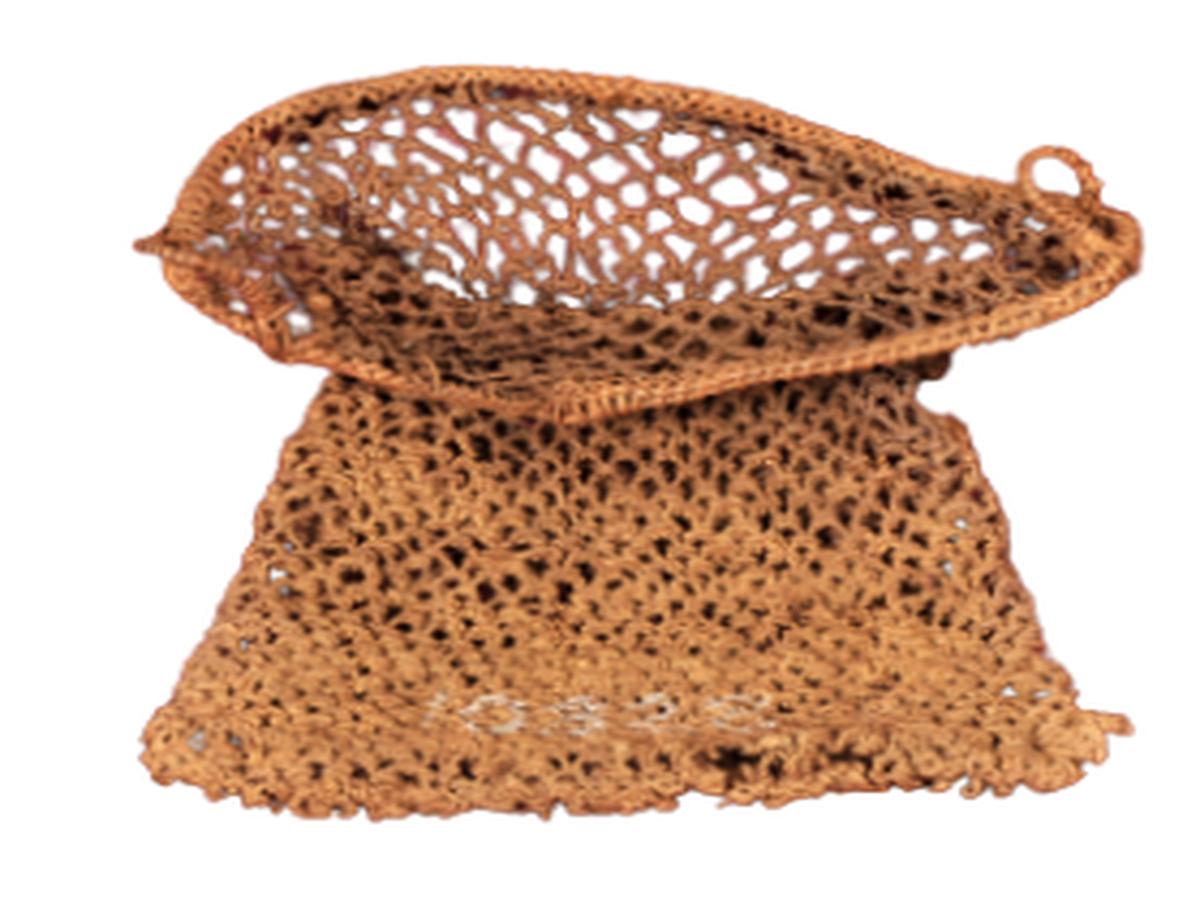State
Tribe Name
Art Type
short description
This string bag is a traditional craft of the Abor tribe of Arunachal Pradesh, said to be amply rich in tribal heritage and artisan skill. The Abors, as they are known, or say also the Adi tribe to others, are well known for weaving, bamboo work, and sustainable use of natural sources.Cotton strings are used in the making of the bag which add to its durability and bring it closer to the eco-friendliness.The circular opening is reinforced with a cane strip frame to give structure and facilitate carrying. The combination of textile and cane craftsmanship is intrinsic to the utility items of the Abor, bridging functionality with local artistry. Two loops of coiled cane strips have been fixed to opposite sides of the opening of the bag.
Thumbnail

Filter Postion
Left
Filter Background
Off
Theme
Filter Header Image

content
Image

description
This string bag is a traditional craft of the Abor tribe of Arunachal Pradesh, said to be amply rich in tribal heritage and artisan skill. The Abors, as they are known, or say also the Adi tribe to others, are well known for weaving, bamboo work, and sustainable use of natural sources.Cotton strings are used in the making of the bag which add to its durability and bring it closer to the eco-friendliness.The circular opening is reinforced with a cane strip frame to give structure and facilitate carrying. The combination of textile and cane craftsmanship is intrinsic to the utility items of the Abor, bridging functionality with local artistry. Two loops of coiled cane strips have been fixed to opposite sides of the opening of the bag.
These loops would have been for attaching a carrying string or fastening the bag to the body or belt to provide easy transport, leaving the hands free for daily work in the fields or at the market. Small bags such as this would be handy for fetching a few small articles-some medicinal herbs, some seeds, some personal belongings. In a wide cultural context, these items of daily use speak about the sustainable lifestyle of the Abor people, where utility objects were made of locally available materials, which were heirlooms over generations or made with the collective support of family members. This simple but beautiful object is now located in the Indian Museum, Kolkata, and it stands for a marriage of utility, tradition, and indigenous knowledge from the tribal societies of Northeast India.
These loops would have been for attaching a carrying string or fastening the bag to the body or belt to provide easy transport, leaving the hands free for daily work in the fields or at the market. Small bags such as this would be handy for fetching a few small articles-some medicinal herbs, some seeds, some personal belongings. In a wide cultural context, these items of daily use speak about the sustainable lifestyle of the Abor people, where utility objects were made of locally available materials, which were heirlooms over generations or made with the collective support of family members. This simple but beautiful object is now located in the Indian Museum, Kolkata, and it stands for a marriage of utility, tradition, and indigenous knowledge from the tribal societies of Northeast India.
Image Mode
landscape
promoted
On
Verified
Off
